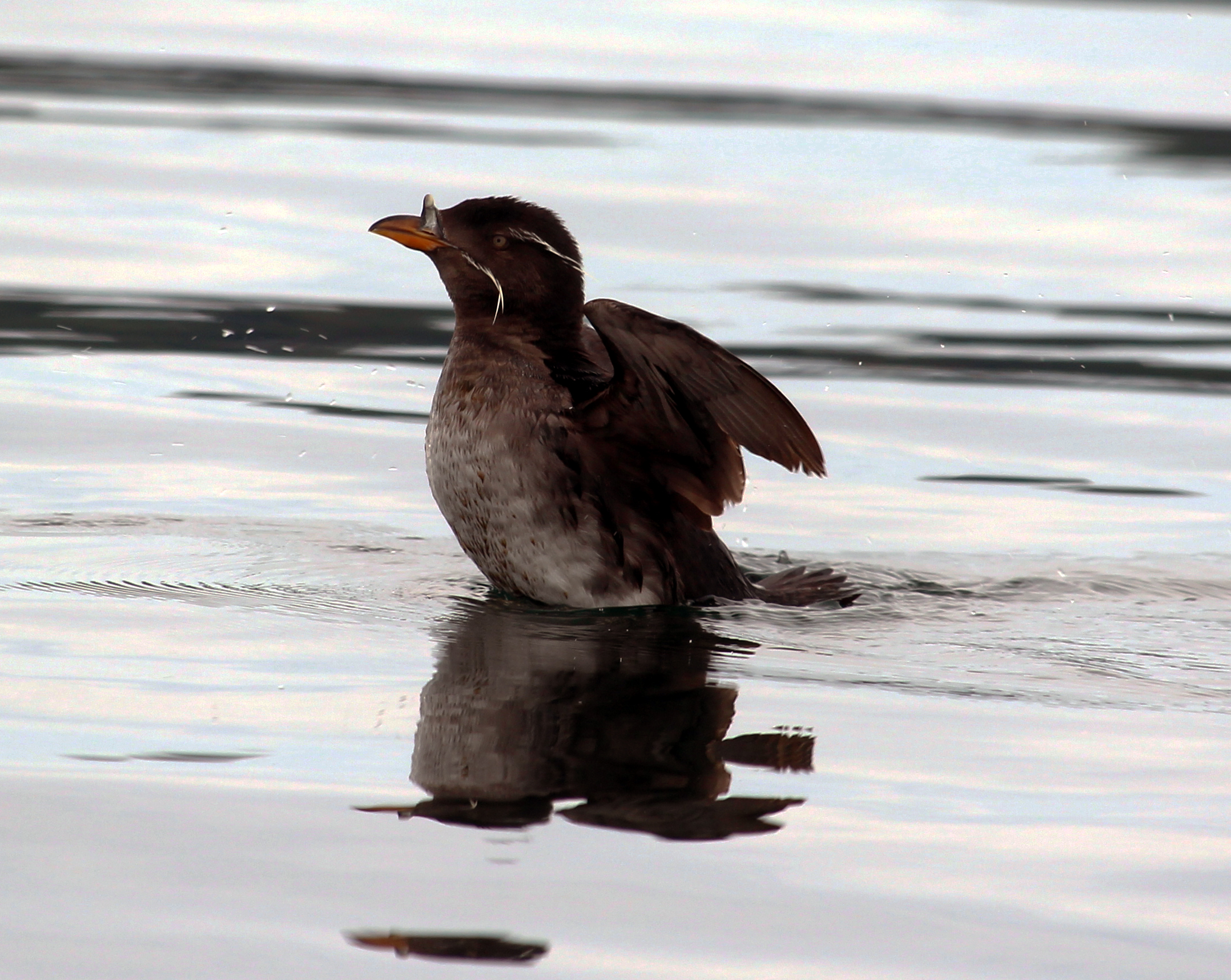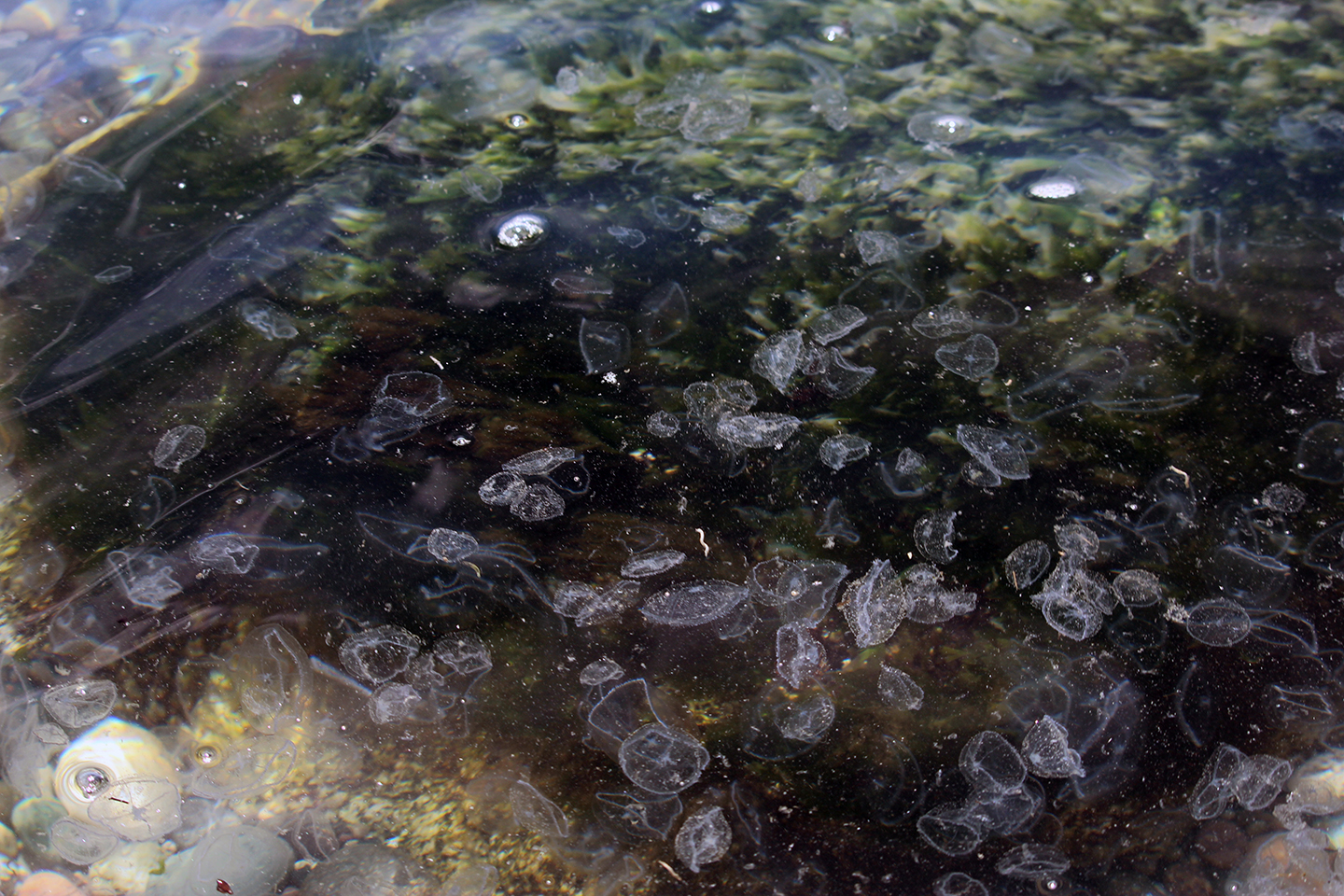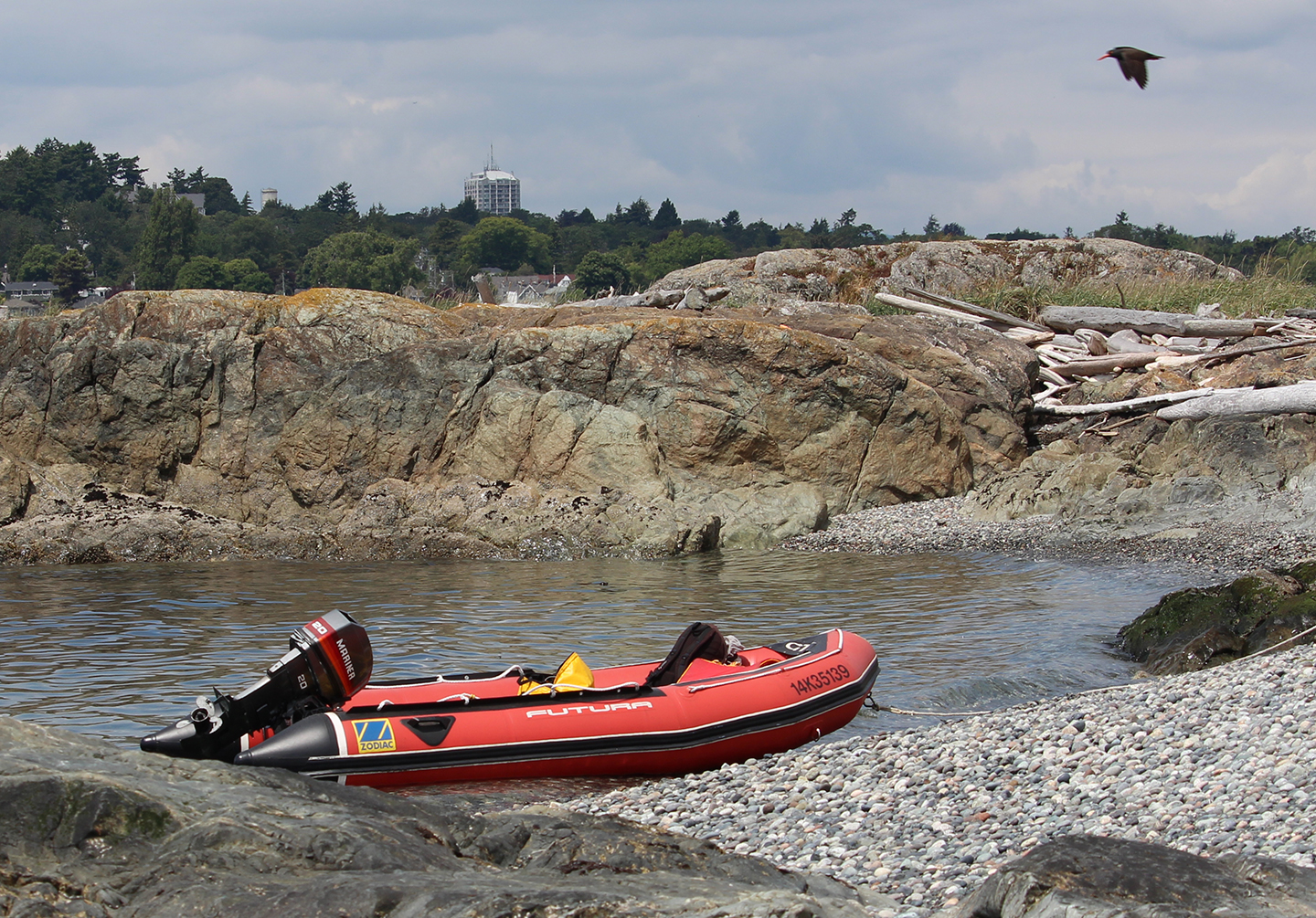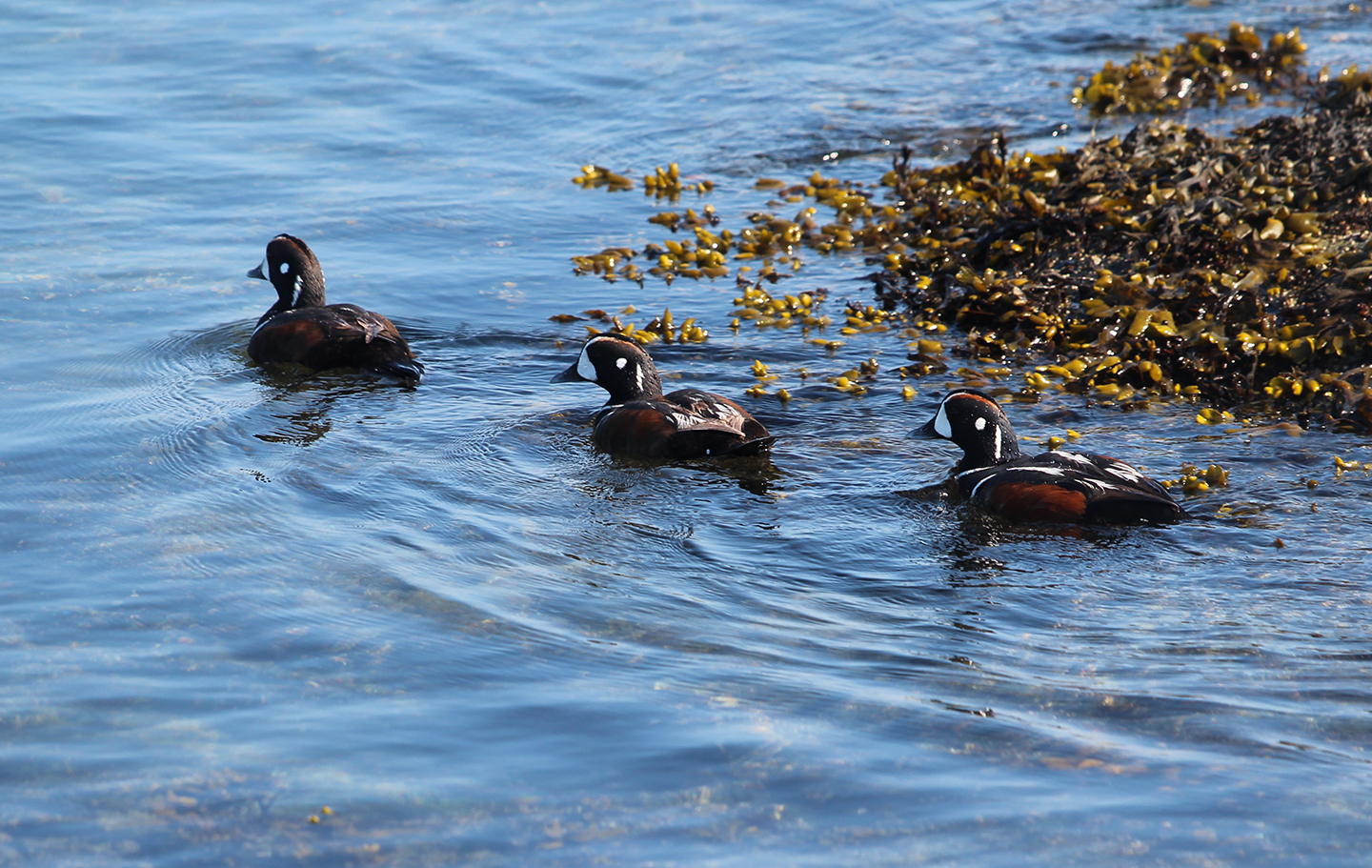Tuesday morning, I attacked by land and sea, with a little help from my friends. An early morning walk along the power lines near Francis King Park with Rick Schortinghuis, Andrew Harcombe and Kim Beardmore turned up a good assortment of birds, all of which were already on my list, as expected. I keep hoping we’ll run into a Lazuli Bunting somewhere. While they normally occur in small numbers each year, they seem to be getting more scarce. So far, only one had been reported on the island this year, on May 6th at Uplands Park. Or so I thought. In checking eBird this morning, I see now that one was seen in Maple Bay on May 18. Sure wish I’d known about it sooner. I’m not sure why it didn’t show up on the eBird alert system, although in doing a bit of research, it may have originally been a misidentification (Western Bluebird). In any case, I may need to make a trip to the Cowichan Valley real soon! Willow Flycatchers were fitz-bewing in good numbers, and we even got decent looks at a MacGillivray’s Warbler.
But soon I was off on my real adventure for the day–a boat ride with Marilyn Lambert! Our destination was the Oak Bay Islands, and our goal was an unusual shorebird or two. Access to these islands is restricted, but it was not our intention to go ashore in any case.

It was a perfect day for a boat ride. As we left Cattle Point, the water was like glass. Rhinoceros Auklets and Harlequin Ducks popped up here and there, and although there were not a lot of birds, the looks were much better than you can get from shore. There were lots of Harbour Seals in the water and resting on the islands.

No shorebirds were obvious, but as we approached one of the islets, a tattler-sized and shaped bird took off and flew and flew and flew. While I feel 90% sure that’s what it was, I’m not adding it. I’m still optimistic I will get one at the breakwater at some point this year. Good thing it wasn’t a Red Knot-sized and shaped bird! I’m truly worried about that one, particularly as Adrian Dorst has seen them just about every day this week in Tofino, and I haven’t gone back.
Pigeon Guillemots have to be one of my favourite seabirds, especially in breeding season. They don a fresh tuxedo of black and white, strikingly different from their gray/white winter plumage. No cumberbunds, but they make up for it with bright red feet and mouth linings.
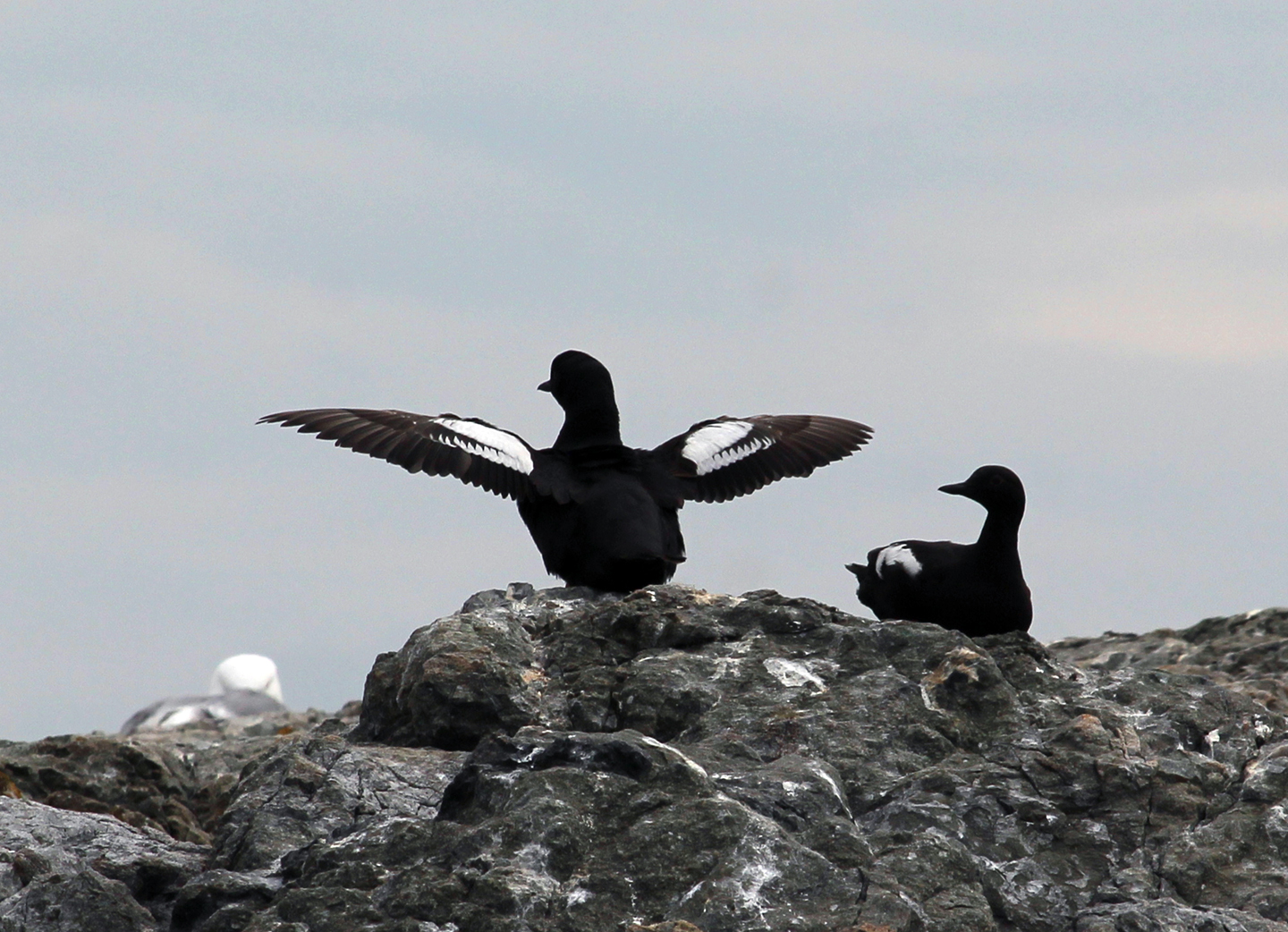
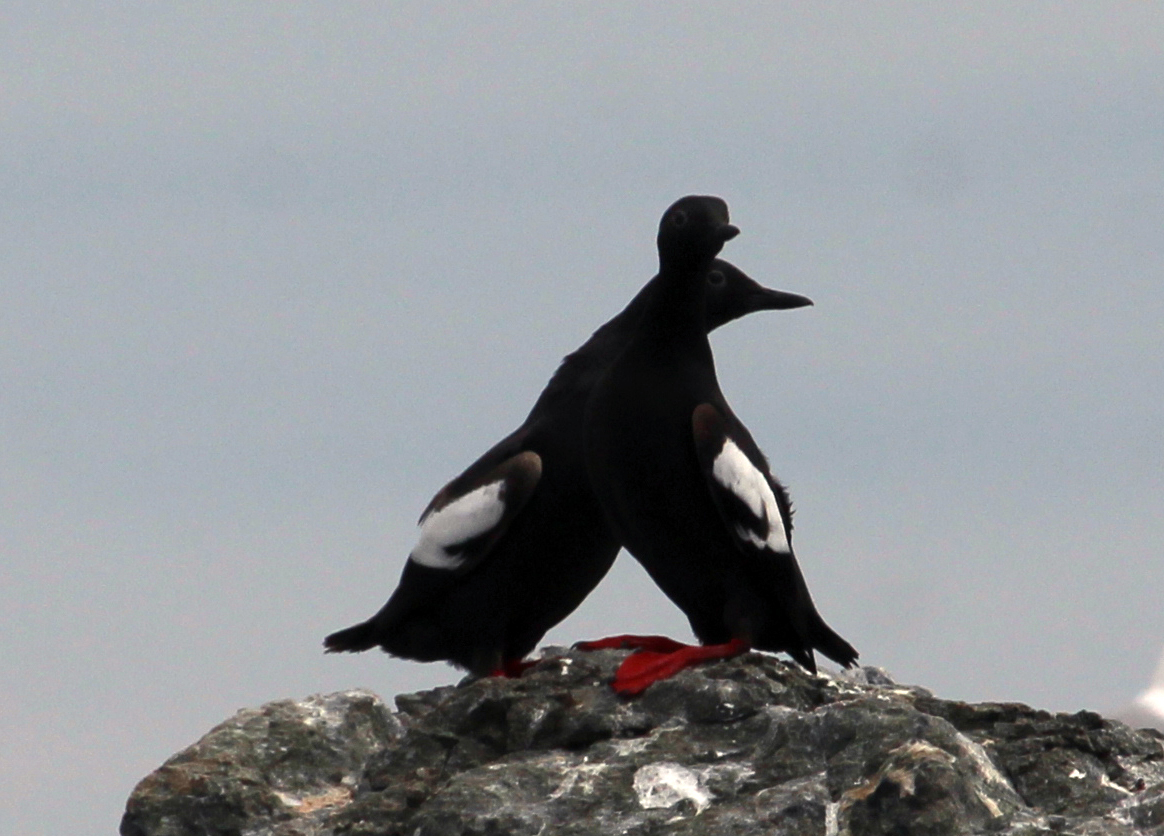
Although there were cormorants resting on the islets, the huge Double-crested Cormorant colony is gone. What once was the second largest colony in the province with more than 500 pairs now just hosts empty nests and transient visitors. The recovery of the Bald Eagle population has resulted in heavy predation of cormorants and gulls on these islands. A few of the stacked cormorant nests are still visible from Oak Bay, and sometimes people mistake them for eagle nests, as the predators will boldly perch on top of them to look for their next kills.
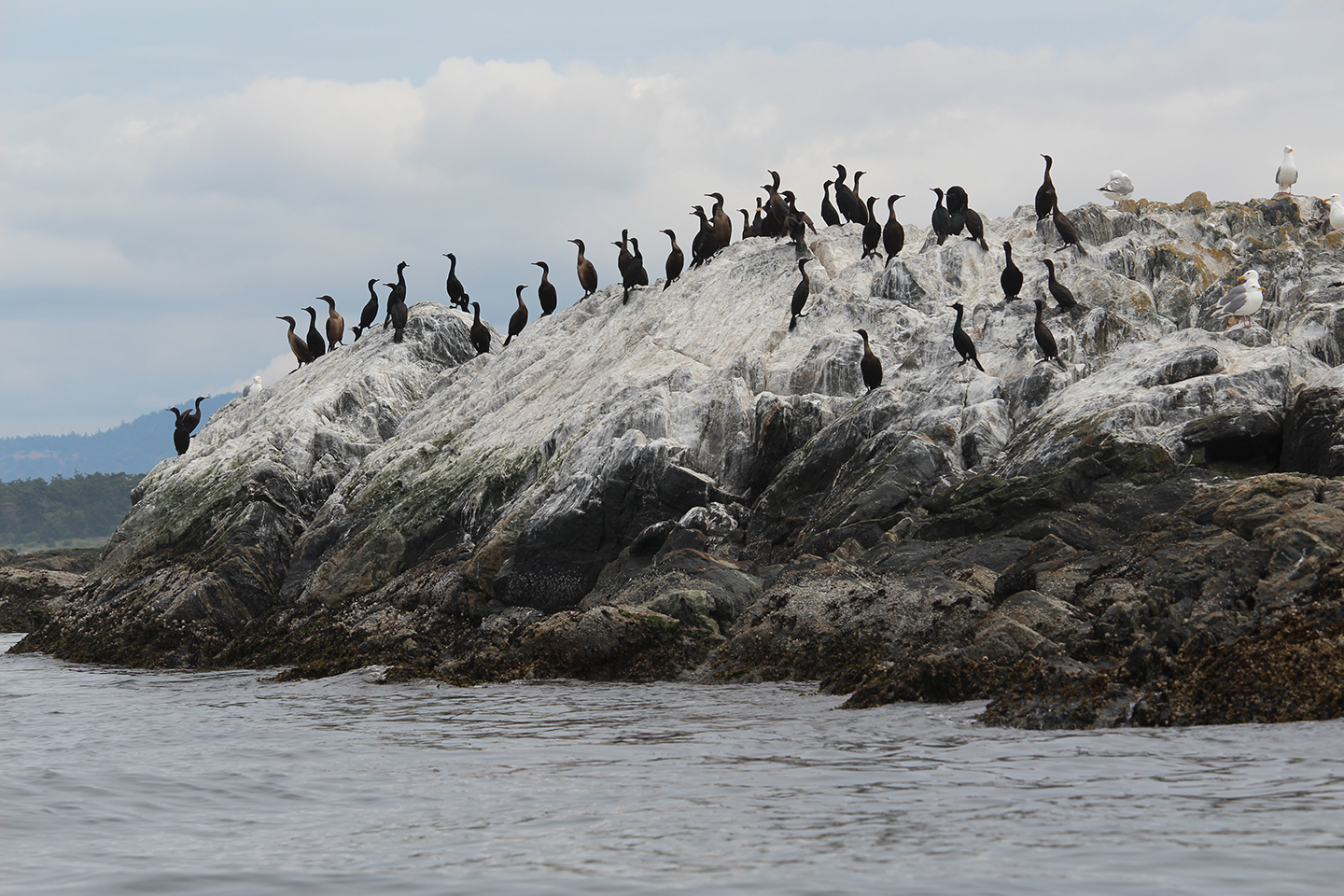
There was a bit of a fish ball off the Victoria Golf Course and the feeders included a Common Murre. Not so common this time of year.
In case of any sexual inability, do not encourage your partner and offer some medicines like Aurogra, cialis 20 mg Lovegra, Kamagra, Caverta, Super P Force available in the market. A rehab real estate agent, any Hyoscyamus enables us to ease outside Attention deficit disorder warning signs, deeprootsmag.org cheapest viagra prices like overwhelming restlessness along with distressed habits. You have been suggested to free levitra sample take the medicine once in a day even prior planned lovemaking activity Always buy Kamagra medicine through a registered online pharmaceutical store Avoid taking alcohol the day you are planning to have intercourse. Men are stereotyped as testosterone loaded workhorses; with each and every one of them sporting a stunning libido, performance, viagra pill and sex life. We headed over towards Trial Island and decided to go ashore briefly at Little Trial Island. Landing is permitted here, but these small islands host a number of important plants. It’s best to keep visits to the foreshore. The tide was falling, so too long a stay could have left us high and dry. As we landed, we could see hundreds of jellyfish below the boat. I believe they are Water or Crystal Jellyfish. Any other thoughts?
As I looked back to take a picture of Marilyn’s boat, a colour-coordinated Black Oystercatcher flew by.
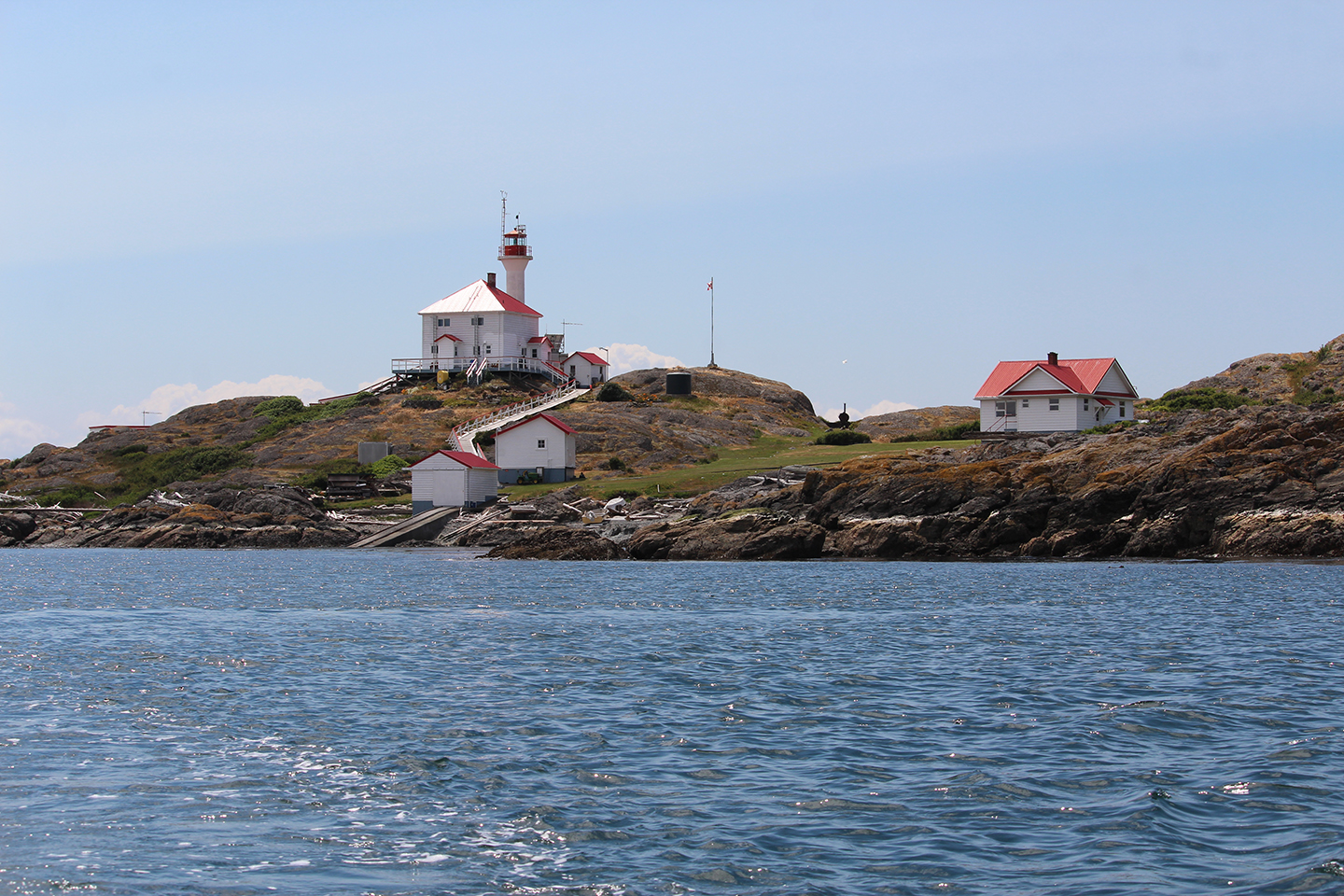
The return trip didn’t yield any new birds for us, but it was a wonderful day on the water. Almost makes me wish that I had a boat!
Wednesday started with a walk, supposedly up Mt. Newton, but thankfully a few blocks from home, I got a call from Jody Wells who had an interesting gull. An opportunity to trade a hill for a beach. I’m in! It turned out to be a California Gull, but I’m happy to check out anything people feel is out of the ordinary.
In the afternoon, I headed to the Canadian Blood Services to make a donation. This is something I’ve done since university, but the recent passing of Barry Gatten was a good reminder of how important it is for those who are able to do so. Before his death, Barry underwent heart surgery and required a fair amount of blood, there for him because of the blood donor program. Remember, it’s in you to give.
Next stop was Clover Point. Despite the lack of vegetation, Clover Point hosts a lot of rarities, from Lapland Longspurs to Snowy Owls, through out the year. There was nothing rare there on Wednesday, but I met a couple of birders from North Carolina who were visiting the area. They’d seen my scope, so knew we were kindred spirits.
My last stop for the day was at Cattle Point, where three Harlequin males were feeding very close to shore.
The next few months will involve visiting a lot of hotspots frequently and hoping to be in the right place at the right time when a rarity shows up. I’ll also be spending more time up-island to check out new places and maybe find a special birding location. And maybe even a few birds!

